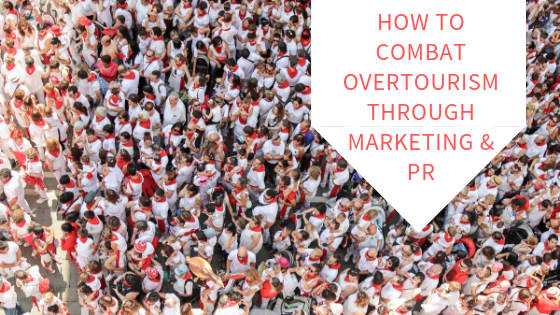How to Combat Overtourism Through Marketing & PR
Before March 2020, an influx of people had been traveling to impressive destinations. While on one hand this is exciting, that surge of travel has a downside – overtourism. Overtourism is when there are too many visitors in a particular destination. The impact, as explained by the World Tourism Organization, is congestion at specific locations and monuments, pressure on infrastructure and resources and negative impact on the quality of life for residents. Even when we thought it would fall back during the pandemic, national parks and other popular outdoor locations started or continued to deal with the issue. Now that travel is back, the topic of overtourism is back on the list of top concerns for many destinations and attractions.
In 2019, I attended the PRSA Travel & Tourism Conference in Philadelphia where the topic of overtourism came up frequently. The key message? As destination marketers, we are responsible for doing our part to combat overtourism. Below are some marketing and PR angles that hold true post-pandemic and can help ease the influx and impact on your destination.

Second- and Third-Tier Cities
Editors repeatedly tell us they’re looking to focus on second- and third-tier cities. Use this to your advantage and pitch stories around destinations that are off the beaten path.
Travelers feel the same way. Gone are the days when people are looking to see the same monument their friends, family and coworkers have been to. Now, travelers want to be the first one to discover a new destination and induce FOMO in everyone else. Feature new stops and attractions on your website and social media. Post quirky dishes and Instagram-able locations that will grab visitors’ attention. (Check here for tips on Instagram for tourism)
New Neighborhoods
Include up-and-coming neighborhoods in your “must-see” pitches and blog posts. Highlight new restaurants, accommodations or farmers markets that have popped up in under-the-radar areas. Encourage visits to places one or two neighborhoods over from the popular streets. Create tours around these areas or include a stop on an existing food, wine or architecture trail.
Undiscovered Activities
For destinations considered “on the beaten path,” turn your focus to promoting off-the-beaten-path experiences. Find the things that happen only in your destination. And pitch your unusual and undiscovered activities – such as cow cuddling.
Shoulder Seasons and Atypical Times
Some destinations (or events) simply can’t stop the masses. But you can encourage visitors to choose a different time of day or year to come. Use your blogs and social posts to explain the benefits of coming at a different time. These could be smaller crowds, more personal experiences or special deals and packages.
See how we helped a summer-centered county go all-in on winter marketing.
Pitch the media off-season angles. Is your most popular summer attraction also open in the winter? How do the views change with fall foliage? Does your local chef create seasonal menus? Provide reasons to visit any time of year.
Overtourism Solutions
Overtourism was coined as a term in 2017, which means publications aren’t likely to consider the topic by itself as newsworthy. Editors are interested in hearing creative solutions to the issue and highlighting the people who are doing it. Similarly, sharing green travel practices on your website helps visitors slow the impact of their travel and minimize their footprint.
Wandering Walks
Some of the most memorable experiences are unexpected. Instead, they’re stumbled upon. Guide visitors off the normal path to places they can explore on their own. When hosting writers, include time in the itinerary for them to wander and discover on their own.
Author
Related Posts
Collaboration Drives Sustainable Tourism
Sustainable tourism has growing importance in the world of travel and tourism. As destinations grow in popularity, they need to collaborate closely with residents, local…
Marketing for Group Travel: Building Solid Relationships with Tour Operators
Group travel is a significant segment of the tourism market, and if you want to see those buses pulling up to the curb and filling…
